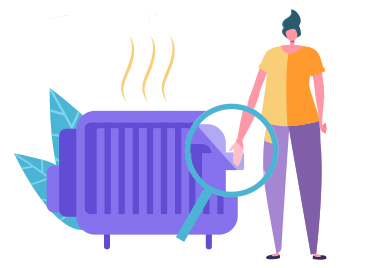10 practical tips on how to save money on your energy bills
10 practical tips on how to save money on your energy bills
BEUC NEWS - 09.03.2022
In light of the ongoing energy crisis, it’s never been more important for consumers to implement low-cost (and no-cost) energy saving measures. Earlier in the project, the STEP partners released a series of videos to promote energy saving tips at home. You can find our 10 key tips below.
-
Space and water heating can cost up to 50% of energy bills. Despite that, many consumers put furniture in front of their radiators. This disrupts the ability of warm air to circulate around the room, meaning radiators will run for longer and cost more. Uncover your radiators! (To be even more efficient, buy some reflective foil, and put it between your radiator and the wall – it will stop heat leaking out and redirect it into the room. Also consider turning down the radiators in rooms when they’re not in use).
-
Using less hot water also means heating less water, and paying less! A low-flow showerhead can reduce water consumption in the shower by 25-60%, without compromising on comfort.
-
Poorly-fitted floorboards mean up to 20% of a room’s heat can slip through the gaps. Rubber tubing, or even a piece of string, can help to fill these spaces. You can top this off with a strip of wax from a wax roller to really seal the deal.
-
Older window frames are often poorly fitted – try sliding a sheet of paper between the window frame and the wall to see if you have this problem. This could lead to 30% of a home’s heat loss. A simple strip of rubber (“draught fitting”) can be applied inside, while on the outside, use caulking or filler to bridge the divide.
-
Lots of energy can be used by unnecessary charging and leaving things on stand-by. Don’t charge your phone overnight when all it needs is 1-2 hours, and unplug appliances not in use every day. Also try automatic timer plugs, that cut the energy charge on appliances that aren’t needed overnight.
-
25% of heat can be lost through a poorly insulated attic. To reduce costs, put about 30cm of insulation in your attic. This can be picked up at most DIY stores. If you have an open, unused chimney, it can take all the hot air out of a room in just one hour. For that reason, block it with everyday items, like a cushion in a plastic bag. (Be sure to remember and remove this if lighting a fire – leave the bottom of the bag visible).
-
Wondering how to save energy while doing the laundry? Run separate washes for light and dark clothes, setting the washing machine at 30 degrees. Don’t overdo it on detergent – too much will lead to a longer rinse cycle. If you air-dry your clothes, consider hanging them outside, or close to – but not directly on – a radiator.
-
While LED light bulbs have a higher upfront cost, they last 10x as long as a “traditional” light bulbs, and use less energy: a 5 watt LED gives the same light as a 40 watt traditional.
-
Cooking up a storm? Make sure to match your pan to a ring/hob of the right size. By putting a lid on the pot, you can cut the time (and energy) it takes to boil something by 50%.
-
If you have the money, consider an energy efficient fridge: while a newer fridge with a high energy label rating might cost €40 per year to run, an old, inefficient fridge could cost over €200. Regardless of the appliance, use it wisely: don’t put hot food in the fridge, and remember that a freezer that is 75% full runs much more efficiently than one that is filled to capacity.
The European Consumer Organisation
Europäischer Verbraucherverband
Bureau Européen des Unions de Consommateurs


